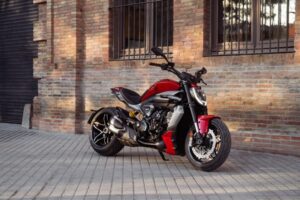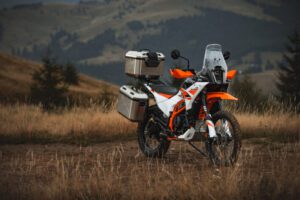A lifetime with Lambrettas: Tom’s tale of speed, friendship, and endurance

Tom Pead has lived and breathed Lambrettas from his days as a teenage mod in the 1960s.
The 74-year-old progressed from gymkhanas and road trials to elite track racing, and he still rides the pair of scooters that have been with him from new in 1969.
Pride of place goes to the GP125, long since upgraded to a 200, that he raced with distinction for Royspeed between ‘69 and 1975.
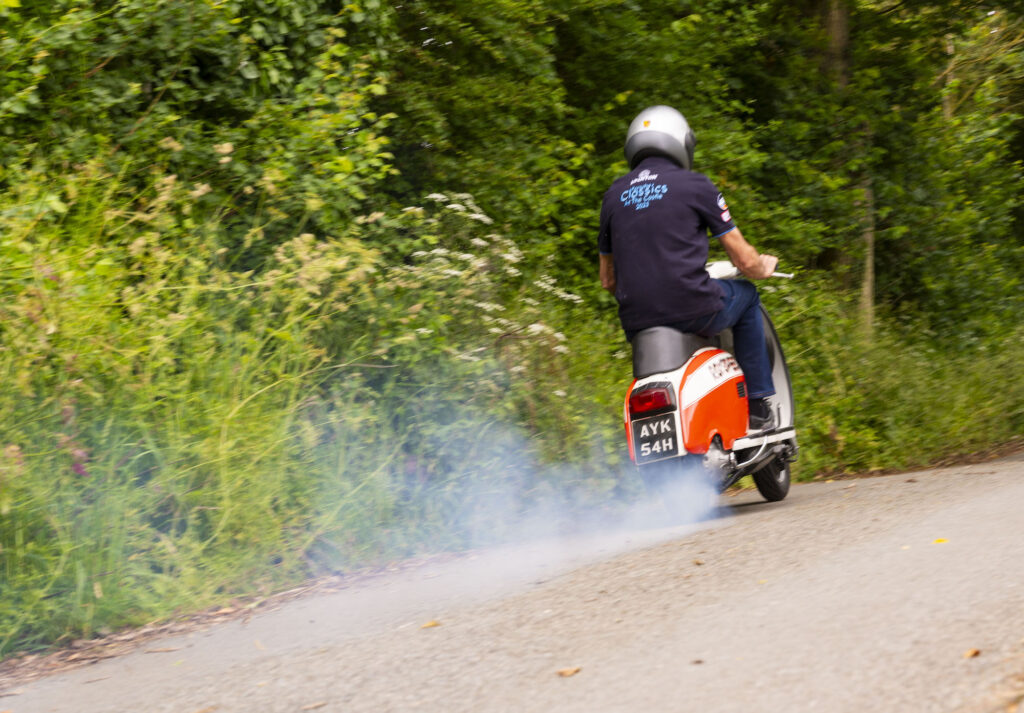 Still on the GP125
Still on the GP125
Completely restored a dozen years ago, the GP is joined by a similarly immaculate 75cc Vega originally bought for Tom’s first wife but occasionally campaigned in grass track racing when, he says, “she wasn’t looking”.
‘So much history’
“Both of these scooters are part of the family, and there’s so much history with the race bike in particular,” he adds. “People try to buy them, but I won’t let them go. They’ll probably go when I go, and I’d like to see them go as a pair to somebody who would appreciate a little bit of history.”
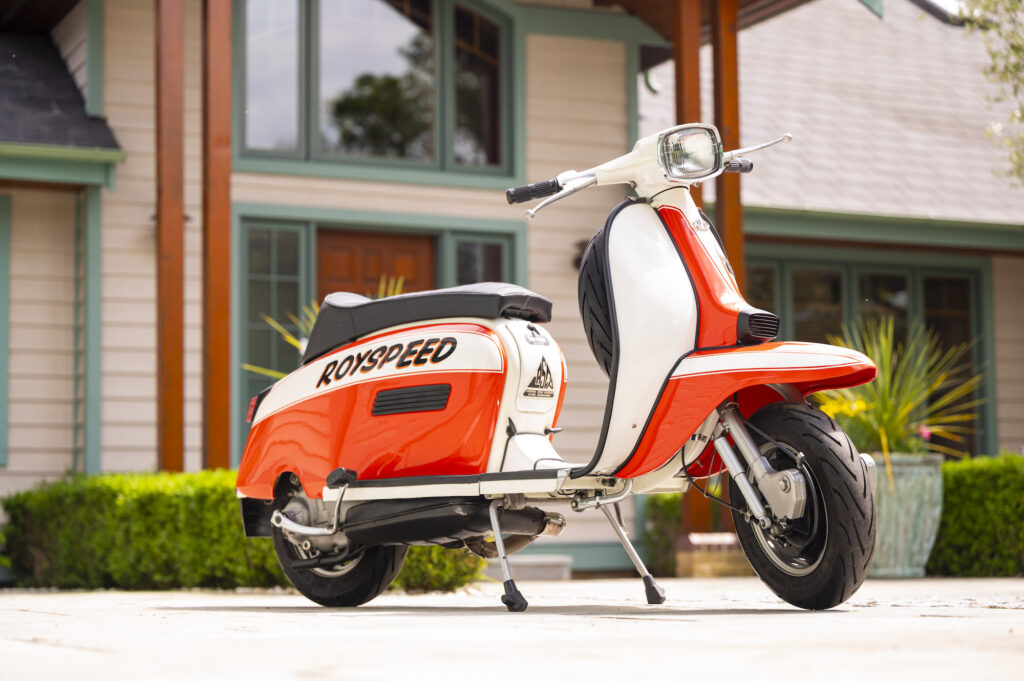 Fully restored Lambretta GP125 race scooter
Fully restored Lambretta GP125 race scooter
Tom’s love for Lambrettas began as a schoolboy in the mid-’60s as a self-proclaimed mod.
“We used to go to dances and meet girls, and to have a scooter was ‘the thing’,” he says, chatting at his home near Chelmsford. “It had to be a Lambretta, because the hairdryers – the Vespas – didn’t count.”
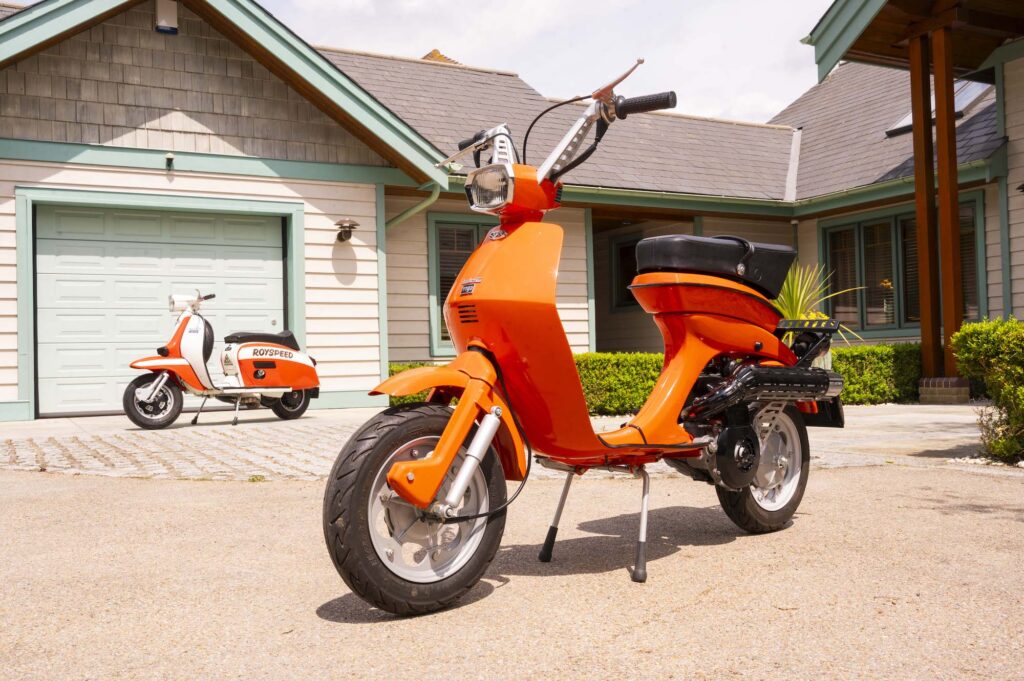
Tom’s journey with Lambrettas began at 16 with his first scooter, a Series 1 Li150.
As an apprentice with little money, this scooter became his gateway to independence and adventure.
Over the years, he upgraded to a Series 3 Li150 and then to a GT200 at 17, “a great bike.”
This marked the beginning of his passion for scooter rallies and competitive events across the country.
“We did rallies where there were things to do, grass track racing, hill climbs, stuff like that,” he says. “The first one I ever did was in Southend-on-Sea, where I met some of the stars of the time, like the Ronald brothers and Neville Frost.”
28 rallies a year
Tom’s commitment to these events was unwavering. In an average year, he took part in 28 events, including road trials that spanned 200 miles.
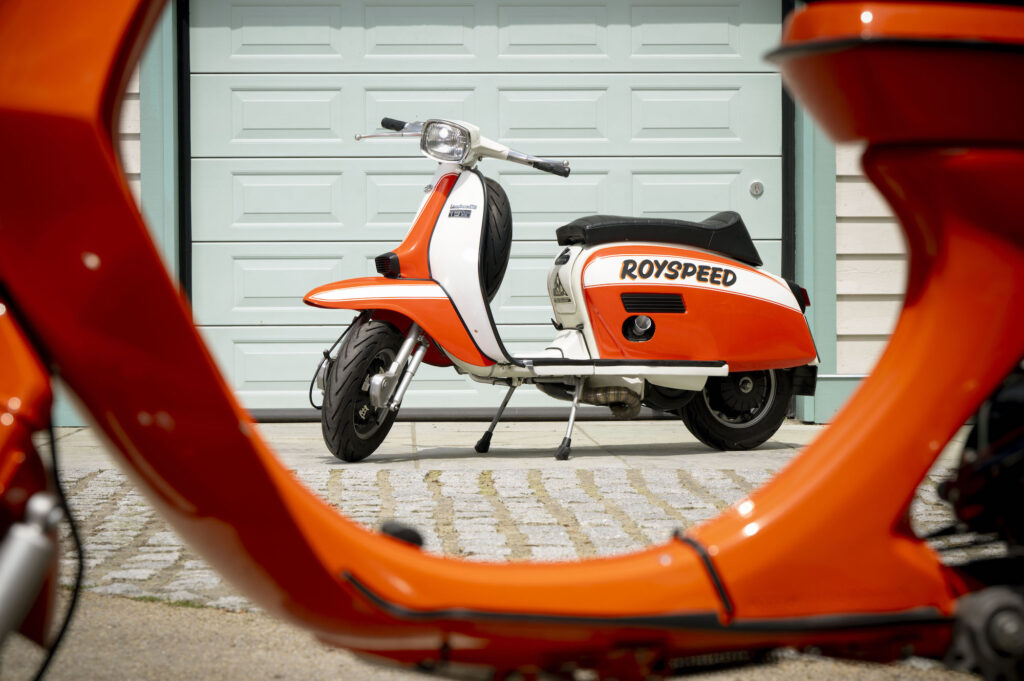
“They were all timed sections, with one or two sections where you could go flat out on the forestry roads.”
Tom also undertook the night-time Starlight trial and a 12-hour all-night event at Snetterton on the GT200, before buying himself a GP200 for a crack at the 2,000-mile Tour of Britain.
“It didn’t end well because, on day three, it started to leak oil through the gearbox – a brand new bike,” he says. “I got a day and half in and had to ride back from South Wales with oil pouring out of the gearbox.”
As road captain for his local scooter club in Hornchurch, Tom would organise events throughout the year.
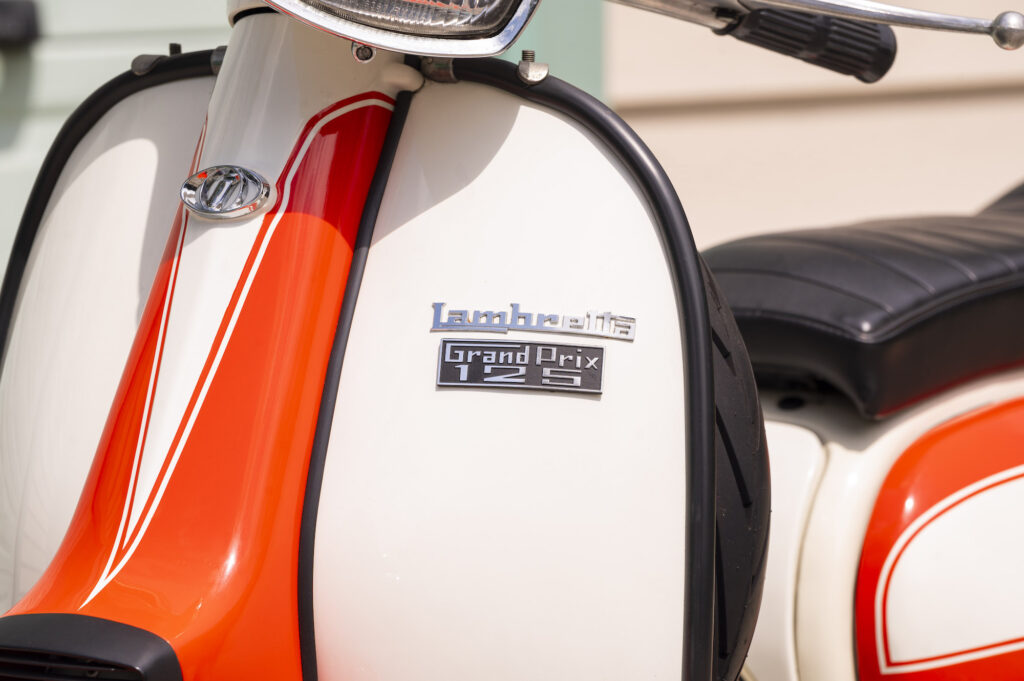
“Generally speaking the events were social and competitive over a weekend,” he says. “On the Saturday evening there’d be a bit of music and beer, and on Sunday normally some fairly mild competition stuff.”
Things moved up a few gears through Tom’s burgeoning friendship with Roy Cary, owner of scooter shop Roy of Hornchurch and the Royspeed tuning brand.
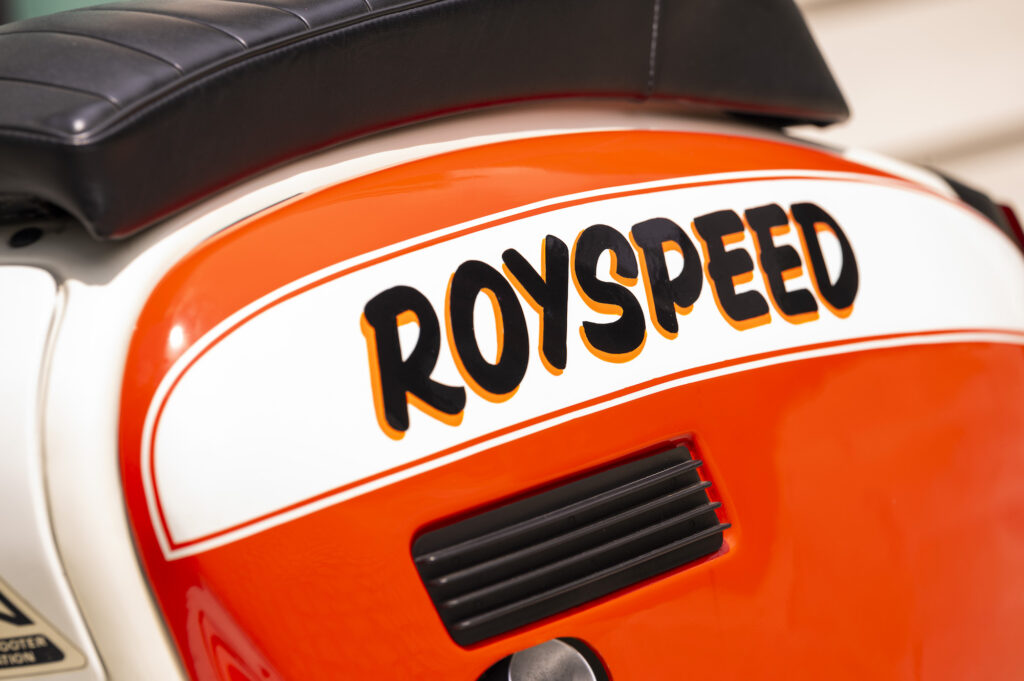
“I used to buy lots of stuff when I had the GT200 and we were great friends,” he says. “He got really seriously interested in all the racing stuff and was importing stuff from Italy and had people working for him tuning bikes.
Snetterton 12-hour race
“He’d seen me at Snetterton on the GT200 in the 12-hour race and he asked me if I wanted to ride a shop bike.
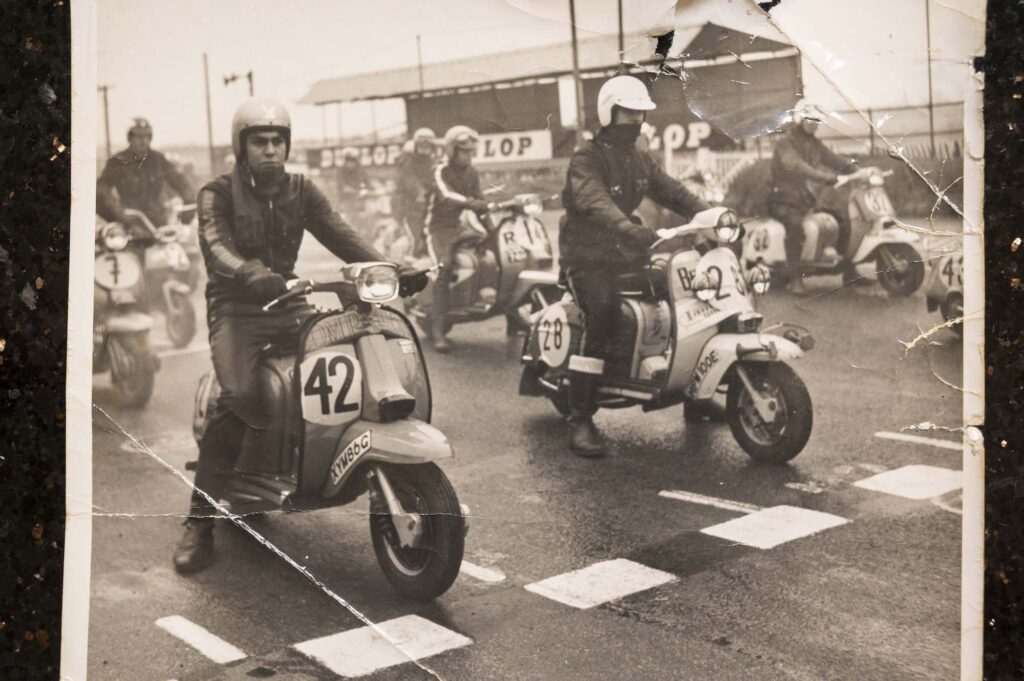 Lining up at the Snetterton 12-hour race, number 42
Lining up at the Snetterton 12-hour race, number 42
“They provided me with a 225 special with Wal Phillips fuel injection. The bike was very quick, but brutal – it had two speeds, flat out or stop. Unfortunately it self-destructed at the first race in May 1969 and chucked me over the handlebars.
“So then he said ‘OK, I’m off to Italy’, and he came back with a DL125, which in Britain was sold as a GP125, brand new from the factory.”
This is the Lambretta that has been with Tom ever since, first campaigned as a 125 race bike for a year, then as a 150 for two years, and finally a 200 for three seasons from 1972.
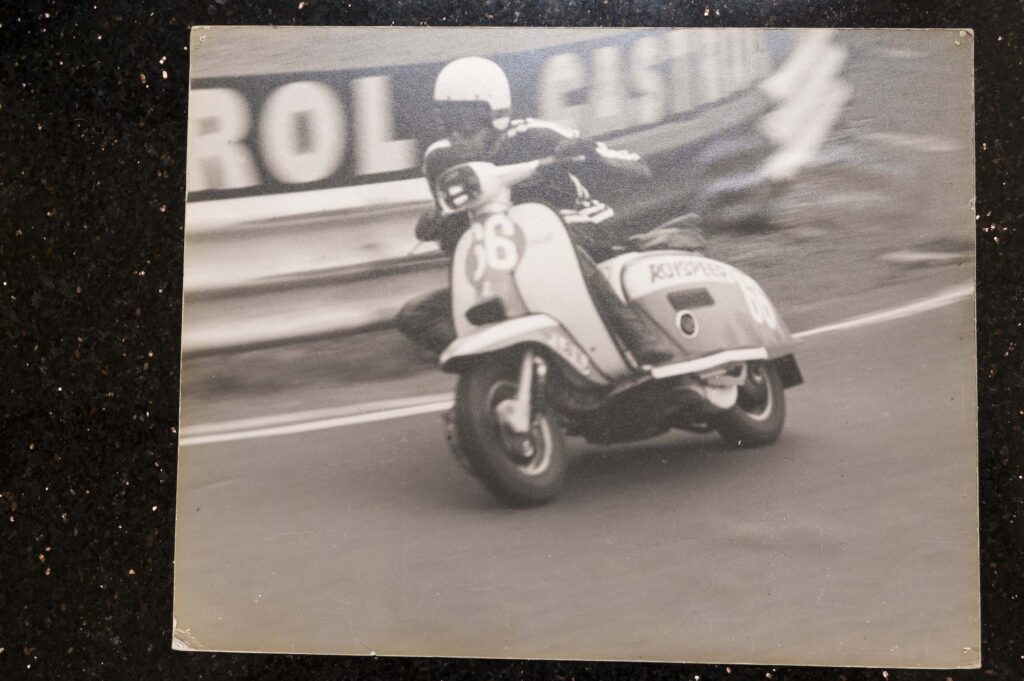 In action at Mallory Park in 1971
In action at Mallory Park in 1971
“The scheme was that I had to pay all the entries and the fuel and so on, and Roy provided the bike and looked after it for the first three years,” he says.
“Then when it became a 200 he gifted it to me. Lambretta had gone bankrupt in 1972 and so when that stopped he didn’t see the mileage in it for himself for advertising. He said I’d been supporting him all the way through, so he said the bike’s yours.
“There was a lot of politics at the time in scooters, and people would chop and change what shop they rode for and who tuned it, and I always said ‘well, I ride for you’. Even after he gave me the bike and stopped sponsoring me, I still rode with his name on the bike.”
Scooter bus
In the early years, Tom would ride the scooter to race meetings, later on hiring a double decker bus and cramming the bottom floor with scooters belonging to the Q+C Racing team.
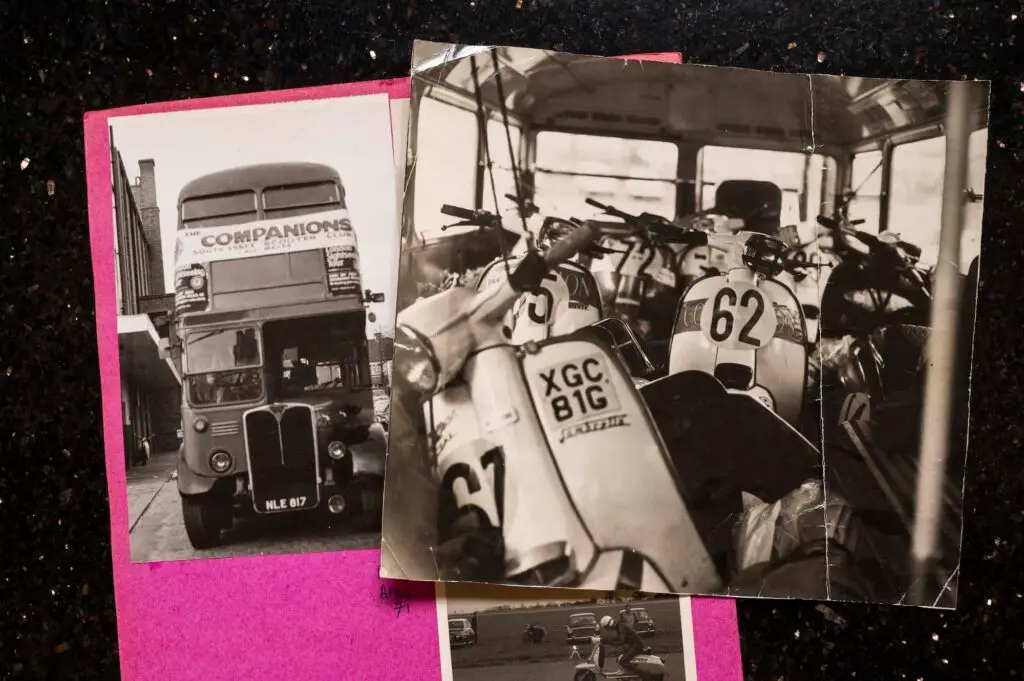
“I’d pay Supreme Coaches of Upminster to take the bottom floor seats out and we’d all sit on the top deck,” he says, “it was great fun.”
The Q+C Racing team would travel together all over the country, to Cadwell Park, Mallory Park, Snetterton, Lydden Hill, Llandow, Castle Combe, and Croft.
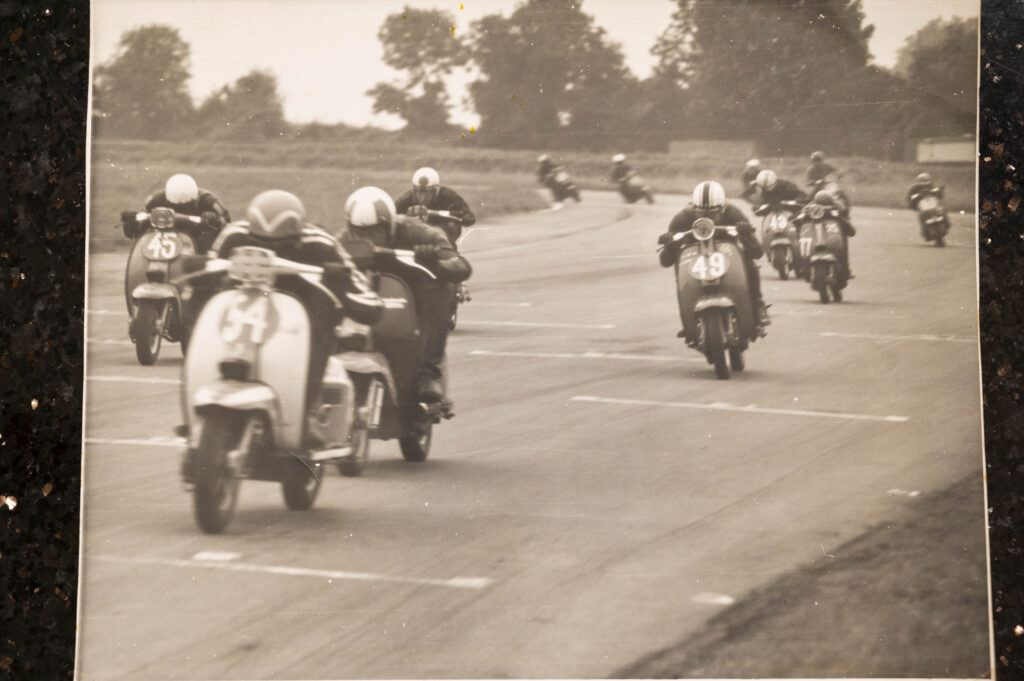 Leading the way at Castle Combe
Leading the way at Castle Combe
As chief scrutineer, Tom was responsible for making sure all the scooters were compliant with tuning regulations.
“They were proper 200s with no funny bits, not like today’s bikes,” he says. “It had to be an original engine, with original components, but you were allowed to tune it. You couldn’t start putting funny barrels and pistons on.
“You could do porting, crankshaft padding and balancing, you could raise the compression ratio with the head, cut bits of piston away, a bigger carb, and have an exhaust system built to suit the engine.
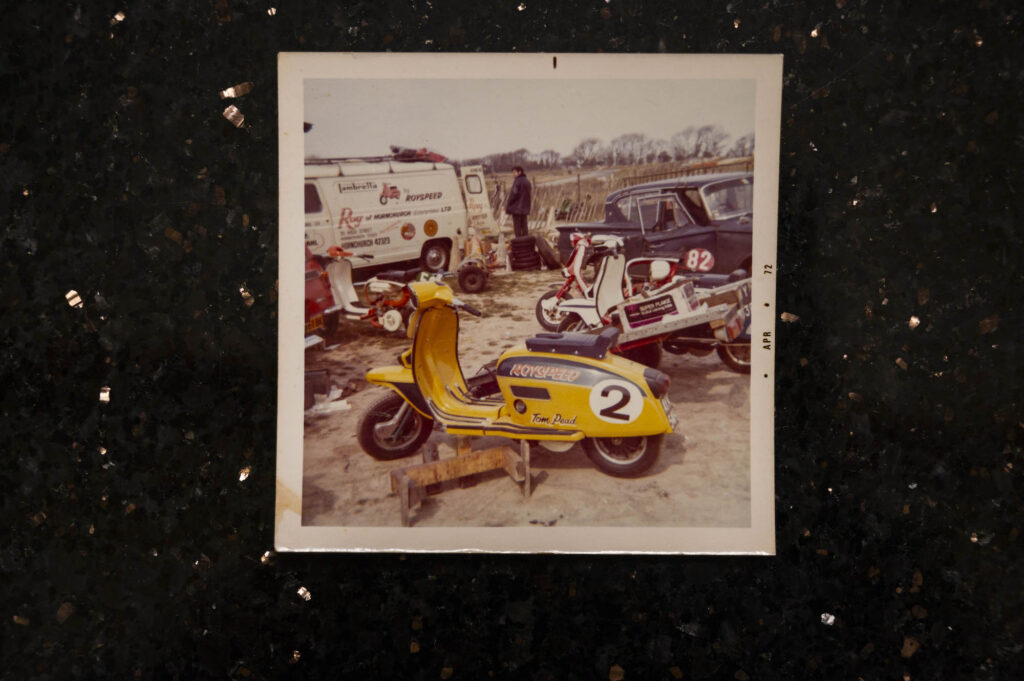 At Lydden in April 1972
At Lydden in April 1972
“Cadwell Park had a speed gun and it was clocked at 82mph on the back straight.”
The focus for Tom and his teammates was reliability.
Beat the big clubs
“We wanted to win things and you don’t win things by breaking,” he says. “We were a small team, five of us, and we wanted to beat the big clubs.”
And they did, winning the British Championship two years running, “beating the Manchester clubs, the Bromley clubs, much to their disgust”.
 Tom picking up his championship winning medal
Tom picking up his championship winning medal
Tom’s racing career was not without its share of crashes and broken bones.
“The biggest and most momentous one was in 1972 when I was trying to win the championship at Snetterton,” he says. “I entered Coram Curve, a fast bend, and was overtaking a backmarker, who shoved me off and I went over the grass, over the bank, smashed the handlebars, bent loads of bits on the bike, and was carted off in the ambulance.
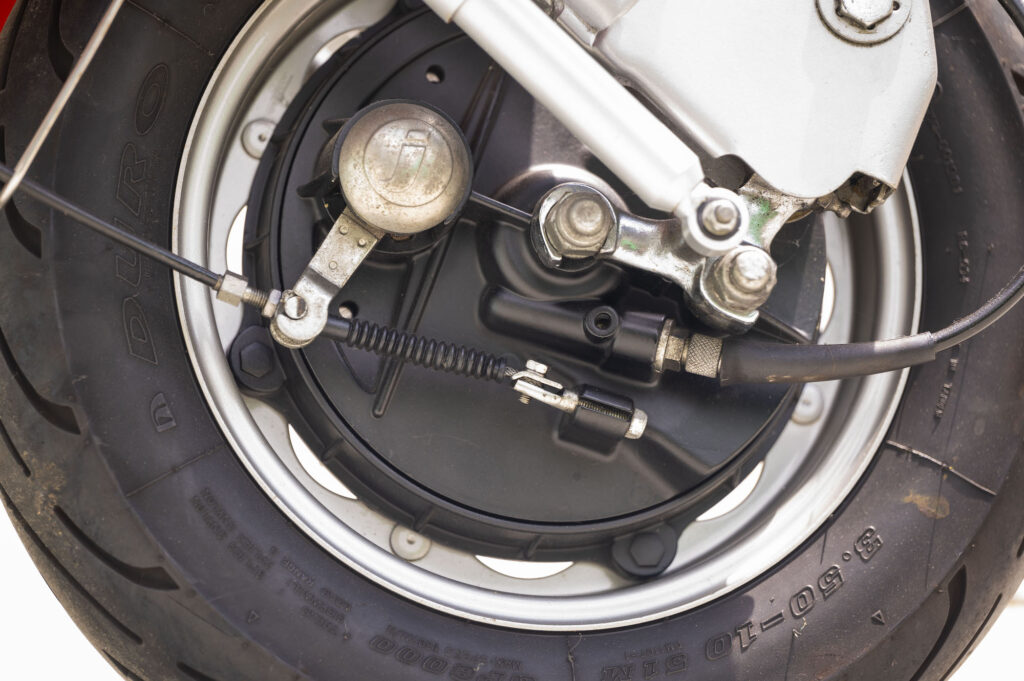
“It was 40 minutes to the next race, and while I was with St John’s, my friends put new handlebars on, straightened out the bent bits, and had it on the grid with the engine running waiting for me. I won the next race and broke the track record, and my friends said to me ‘Tom, why did you go that quick?’ I said ‘cos there’s no f****** front brake!’.”
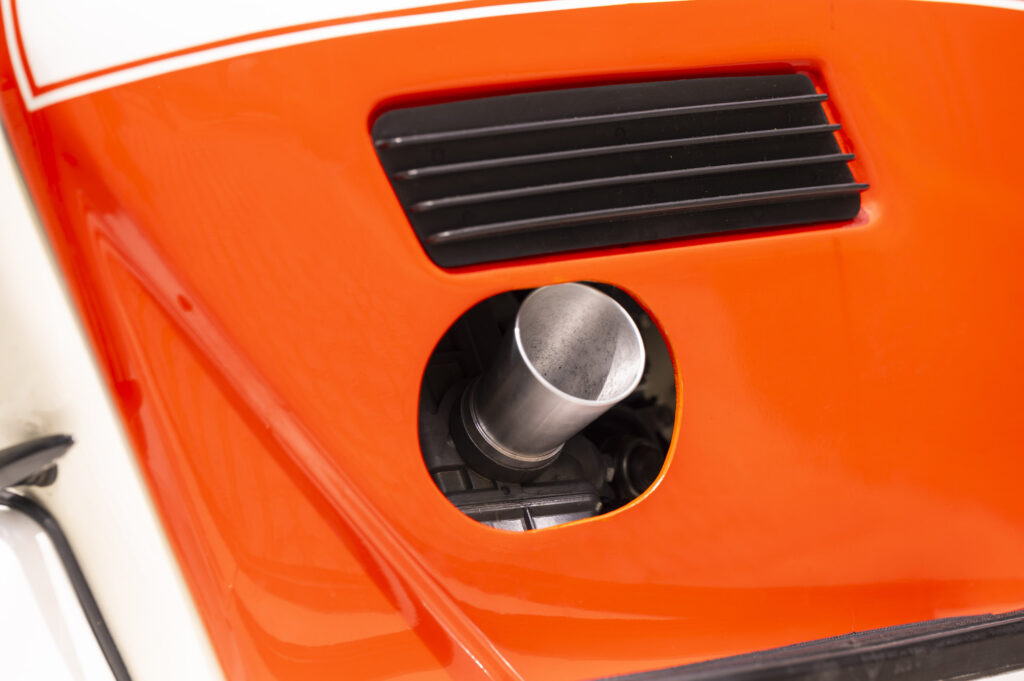
After back-to-back club championships, and with a growing landscaping business to run, Tom – along with his teammates – decided to quit scooter racing in 1975.
“I thought I might repaint it and tidy it all up, but I was married and had about 25 men working for me at that point, and it didn’t get done,” he says.
“It was moved around in boxes of pieces through five different houses until about 12 years ago, when I retired and had the time to restore it.”
Race-tuned engine
All the bodywork remains original, new electrics were installed, and the engine remains in race-tuned, 200cc form.
The main question revolved around what colour to paint the Lambretta, which started off light blue in 1969 before running through a kaleidoscope of colours through its racing career.
“When Roy became an importer for Cal Custom metallic paints, he painted every panel on the bike one of the 12 different colours,” smiles Tom. “I thought ‘great!’.
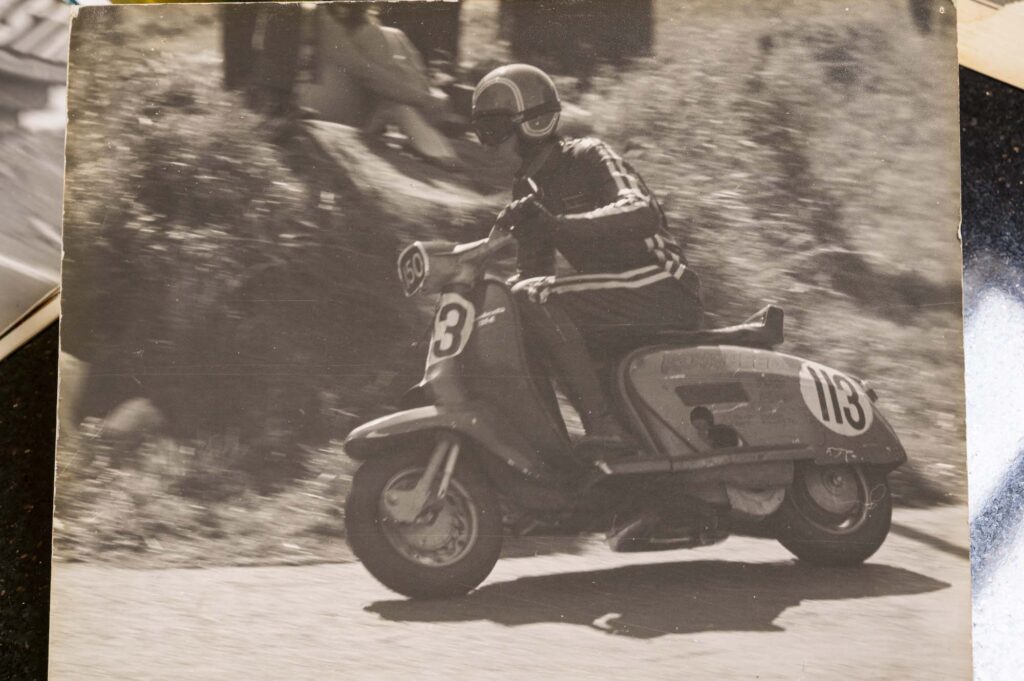 Multi-coloured (honest) at Cadwell
Multi-coloured (honest) at Cadwell
“Then I changed it to yellow and blue after a big crash at Cadwell Park, then orange and white, then a metallic blue and lilac colour, and now it’s back in orange and white, which I settled on after a discussion with my wife Jean.”
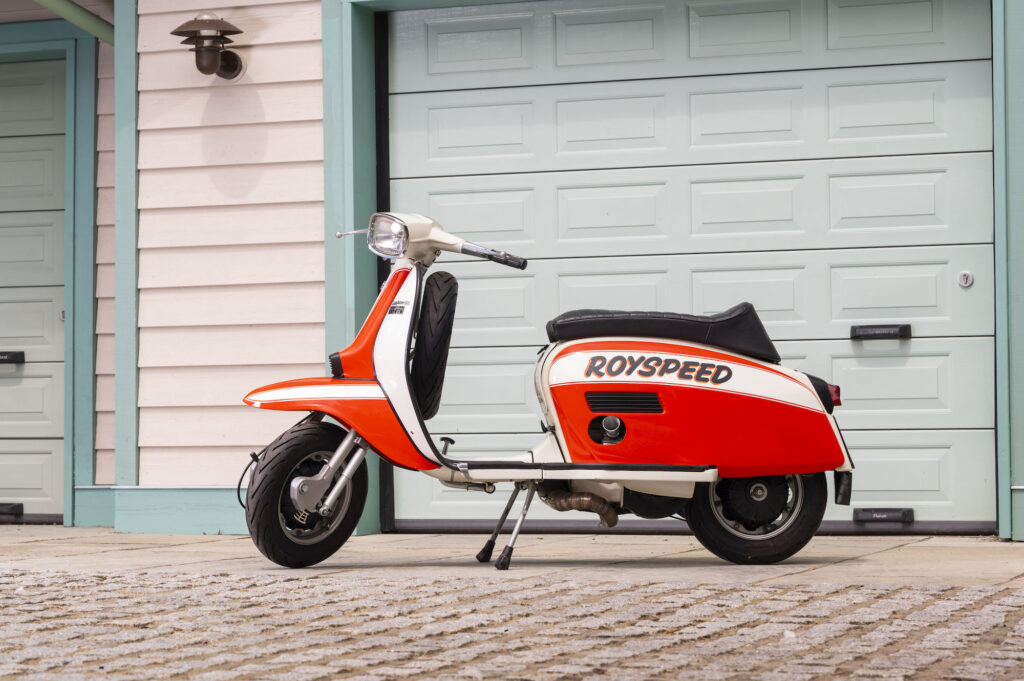
When the restoration was complete, Tom met up with Roy, who found the artist who painted the original Royspeed sign back in 1969.
“He was about 90 by then, but Roy arranged for him to paint the sign exactly as it was,” he says. “Roy used to come out to dinner at the house here, but unfortunately he died in 2021.”
Restored Lambretta Vega
The smaller of Tom’s two scooters is the open-sided Vega, which he says was “in a bit of a mess” until its own restoration in its original orange.
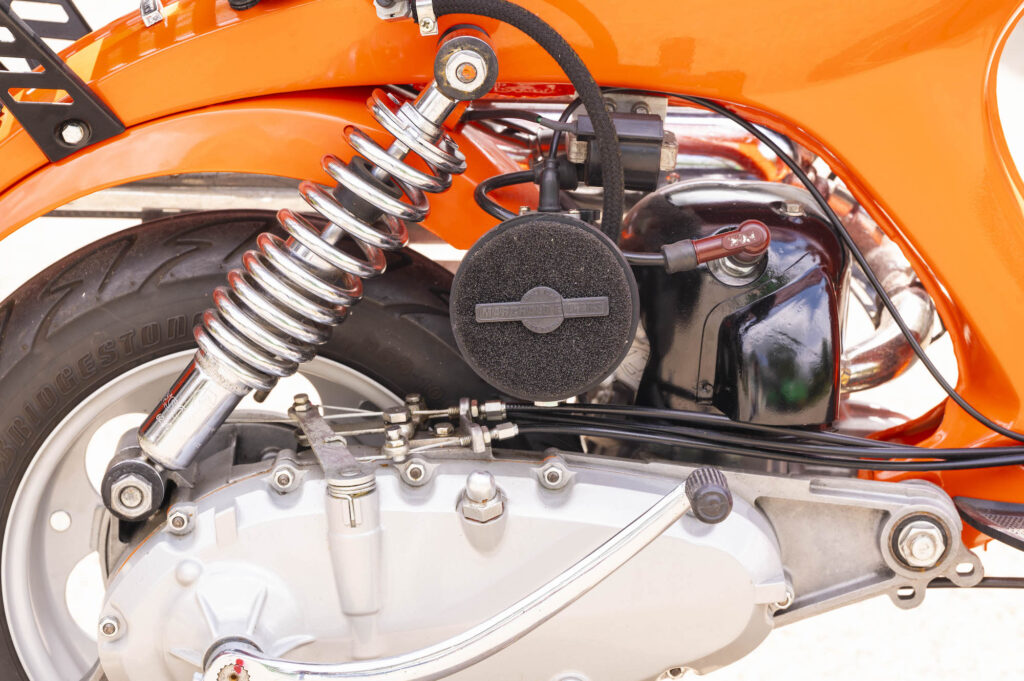
“When I was racing and working on the other bikes, I’d ride it around like a lunatic,” he adds. “If it was snowing or icy, I’d leave the 200 indoors and ride the Vega – you could do whatever you liked with it, ride it around sideways and put your foot down to get yourself out of trouble because it’s so light.”
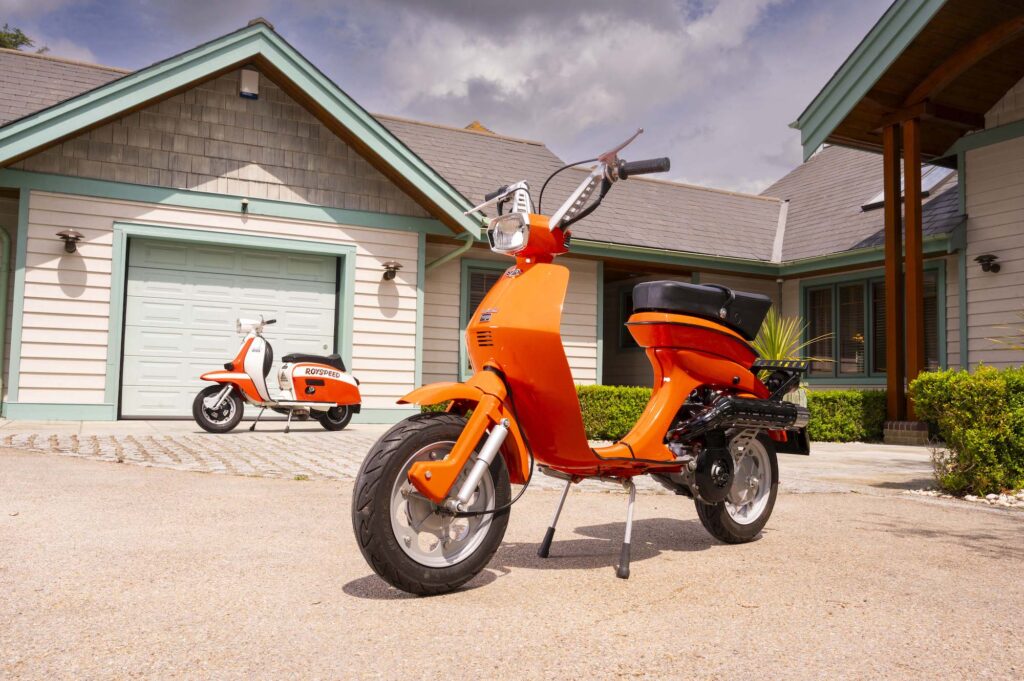
Tom may have long left scooter racing behind, but that doesn’t mean he’s lost his passion for motorsport, competing these days in historic sportscar racing – and the scooters make the perfect paddock bikes at events like the Le Mans Classic and Goodwood Revival, as well as runarounds on motorhome holidays in France.
What’s more, three of his old scooter racing mates that he’s known for more than 50 years help prepare his cars for racing.
“Then there are another 15 to 20 who we meet up with every year,” he adds. “It’s been a good life. We’re all getting a bit old now though…”
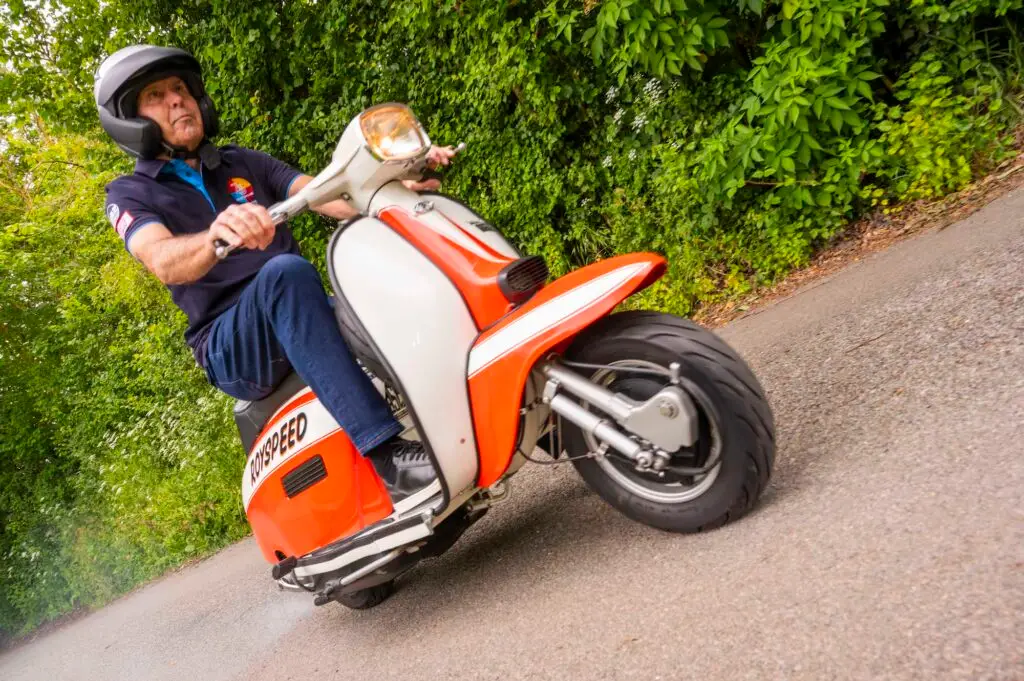
Nevertheless, the spirit of adventure and camaraderie that defined his life on two wheels continues to burn brightly.
Scooter stories is a series of articles exploring the lives and experiences of scooterists and collectors. Click on the Scooter Stories category link to read more.
